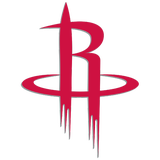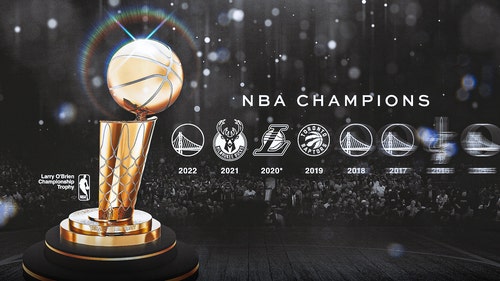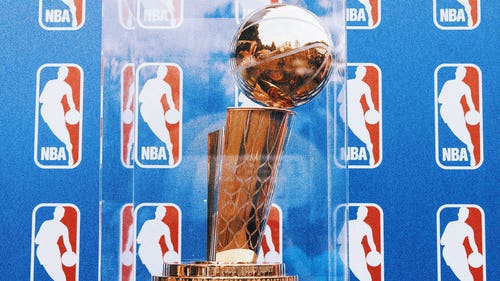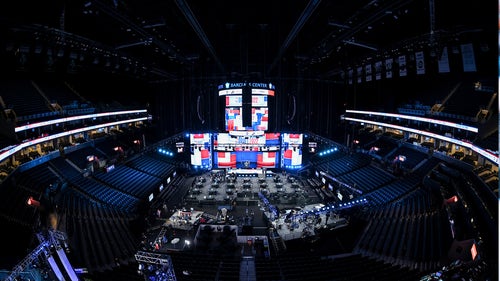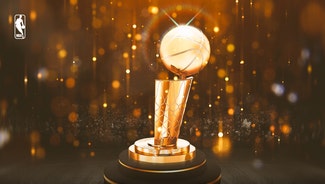
Houston Rockets: Top 10 NBA Draft picks in franchise history

Mandatory Credit: David Butler II-USA TODAY Sports
Despite a lack of high-end lottery picks in recent times, the Houston Rockets nonetheless have a rich history when it comes to success in the NBA Draft.
One of the downsides of having a consistently successful franchise is the lack of high-end lottery picks, and that's certainly been the case with the Houston Rockets. Including the 1984-85 season, the Rockets have made the playoffs in 25 of 33 seasons. This includes three trips to the NBA Finals (winning back-to-back titles in 1994 and 1995) and two separate unsuccessful trips to the Western Conference Finals.
So it's a testament to the both the front office, and the franchise overall, that the Rockets have managed to execute a period of sustained excellence without the luxury of selecting high in the draft.
In fact, since selecting Yao Ming with the No. 1 overall pick in 2002, the Rockets have only selected once in the top 10. That selection, Rudy Gay, was subsequently traded shortly after the 2006 NBA Draft to the Memphis Grizzlies.
The 2016-17 season marked the fifth consecutive time Houston made the postseason, a fine achievement in an always challenging Western Conference. This year, as a result of a midseason trade to acquire guard Lou Williams, the Rockets don't currently hold a selection in the first round of the June 22 draft.
So with the Rockets currently not selecting until No. 43 overall, here's a look at the top 10 most successful draft selections in the history of the franchise.
10. Cuttino Mobley (SG) — No. 41 pick in 1998 NBA Draft
Career Stats (with the Rockets): 436 GP, 17.1 PPG, 4.0 RPG, 2.7 APG, 1.2 SPG, 0.4 BPG, 2.2 TOV, 43.2 FG%, 37.2 3P%, 83.9 FT%
Cuttino Mobley was in fact the fourth and final selection made by the Rockets in 1998, and certainly the most successful. Following four years at Rhode Island, Mobley was not even the top ranked shooting guard heading to the Rockets, with that honor belonging to Michael Dickerson at pick No. 14.
After a solid rookie season averaging 9.9 points in 29.7 minutes per game, Mobley's career took off following the offseason trade of Dickerson, which brought in rookie point guard Steve Francis. Together, the backcourt of Francis and Mobley would enjoy a terrific partnership, with Mobley's ability to spread the floor being a great complement to the athletic and attacking nature of Francis' game.
Unfortunately for Mobley and the Rockets, the shooting guard's six-season stint was relatively unsuccessful until the arrival of Yao Ming in 2002. Mobley's fourth season saw the 6'4″ shooting guard post a career-high 21.7 points per game for the first time as a regular starter, averaging 42.1 minutes per game. This included Mobley ranking 11th in the league with 5.1 three-point attempts per game.
The 2001-02 season also saw Mobley match his career-high in posting 41 points, while also enjoying four games of hitting six or more three-pointers. In essence, Mobley would have fit like a glove in the modern era style of play.
After six seasons in Houston and a first-round playoff exit in his final season, the Rockets hierarchy wanted to find a different sidekick for All-Star center Yao Ming. As a result, Mobley and Francis were shipped to the Orlando Magic in exchange for superstar Tracy McGrady.
Mobley wound up playing 13 seasons in the league, finishing his career with the Los Angeles Clippers. With a career mark 16.0 points per game, Mobley was certainly an inspired pick in the second round of the draft.

Houston Rockets
May 7, 2017; Houston, TX, USA; General view outside Toyota Center before game four of the second round of the 2017 NBA Playoffs between the Houston Rockets and the San Antonio Spurs. Mandatory Credit: Troy Taormina-USA TODAY Sports
9. Mike Newlin (SG) — No. 24 pick in 1971 NBA Draft
Career stats (with the Rockets): 604 GP, 14.0 PPG, 4.3 APG, 3.0 RPG, 1.1 SPG, 2.4 TOV, 46.1 FG%, 86.4 FT%
Mike Newlin was certainly a value pick considering where he was selected coming out of the University of Utah. Like many perimeter players of his era, his numbers with the Rockets are hard to compare with the current era due to the absence of the three-point line. It wasn't until Newlin left the Rockets that the introduction of the three-point line took place.
Arriving in Houston the same season the Rockets moved the franchise from San Diego, Newlin was a staple of consistency throughout his eight seasons in H-Town. His best season for the Rockets came during 1975-76, his fifth in the league. Playing all 82 games, Newlin posted 18.6 points, 5.6 assists and 4.1 rebounds per game.
In a profile of Newlin by Gregory Curtis of Texas Monthly in 1975, Curtis asked an assistant coach of the Milwaukee Bucks, who was scouting the Rockets, to describe what he saw with Newlin's game:
"He still plays about like I remember him. A good shooter, very aggressive."
Despite performing at a solid level throughout his eight seasons with the Rockets, Newlin was somewhat unceremoniously sent away at the end of the 1978-79 season. The New Jersey Nets sent the Rockets a second round draft choice and an undisclosed amount of cash for Newlin's services.
In his two seasons with the Nets, he posted career-highs in points per game. He then played one season with the Knicks before calling it a day at age 33.

Mandatory Credit: Troy Taormina-USA TODAY Sports
8. John Lucas (PG) — No. 1 pick in 1976 NBA Draft
Career stats (with the Rockets): 325 GP, 11.6 PPG, 7.3 APG, 2.4 RPG, 1.4 SPG, 2.3 TOV, 44.6 FG%, 30.8 3P%, 78.0 FT%
Unfortunately for Lucas and the Rockets, the former No. 1 overall pick was never abler to live up lofty expectations after a stellar four-year career at Maryland. As has been well publicized, Lucas one of the first big-name players to succumb to the use off illicit substances off the court.
Lucas' career could certainly have taken a different turn if he had played in another era. When the Rockets signed veteran guard Rick Barry from the Golden State Warriors, as there was no free-agency, it was up to there NBA Commissioner at the time, Larry O'Brien, to decide the compensation.
It was decided at the time that Lucas would be the man, despite just finishing his second season at age 25, and Barry being 35 and past his prime.
The result was Lucas wound up in the San Francisco, at which time he succumbed to the Bay Area's drug culture, in particular cocaine and alcohol. This would haunt Lucas for the rest of his playing days, as he bounced around from one team to another, including another two separate stints with Houston.
Having said all that, Lucas still managed to somehow compile some very impressive seasons during 14 years in the league. In the second season of his second stop with the Rockets, Lucas averaged 15.5 points and 8.8 assists per game at age 32. In all, Lucas played for six NBA teams, with his three consecutive seasons with the Warriors being the longest single stop in his career.
Lucas is now back in an official capacity with the Rockets as their player development coach.
7. Robert Horry (SF/PF) — No. 11 pick in the 1992 NBA Draft
Career stats (with the Rockets): 295 GP, 10.5 PPG, 5.3 RPG, 2.2 APG, 1.1 SPG, 1.0 BPG, 1.2 TOV, 44.7 FG%, 35.6 3P%, 74.2 FT%
Although he lasted just four seasons in Houston, Robert Horry's influence was profound nonetheless. Due to missing out on the 1992 NBA Playoffs with a 42-40 season, the Rockets were able to land the 6'10" Horry to form a frontline alongside Hakeem Olajuwon and Otis Thorpe.
It was in just Horry's second season in the league that the Rockets, and the league as a whole, witnessed a sign of things to come. That is, coming up huge in clutch moments. Horry was a key ingredient in helping the Rockets win their first ever title in 1994 against the New York Knicks.
At just 23 years of age, Horry averaged 37.9 minutes per game for the series, providing the athleticism and versatility that became synonymous throughout his career. This was even more impressive that it came up against such an experienced Knicks' frontline featuring Patrick Ewing, Charles Oakley and Charles Smith.
The following year, Horry raised things to another level as the Rockets won back-to-back titles with a 4-0 whitewash of the Orlando Magic. It was during this series that Horry's reputation simply went through the roof. For the Finals, Horry averaged 17.8 points, 10.0 rebounds, 3.8 assists, 3.0 steals and 2.0 blocks per game. If it weren't for Olajuwon, Horry would have made a very compelling case for Finals MVP.
But unfortunately for Horry and the Rockets, the versatile forward had somewhat stagnated by the end of the following season. And as a result, he was dealt to the Phoenix Suns in a package primarily in exchange for All-Star Charles Barkley.
In hindsight, it appears quite apparent that the Rockets gave up on Horry far too early. He would win another three championships in his seven seasons with the Los Angeles Lakers, and then finish his career with the San Antonio Spurs by nabbing an additional two titles.

Mandatory Credit: Troy Taormina-USA TODAY Sports
6. Calvin Murphy (PG/SG) — No. 18 pick in 1970 NBA Draft
Career stats (with the Rockets): 1,002 GP, 17.9 PPG, 4.4 APG, 2.1 RPG, 1.5 SPG, 48.2 FG%, 13.9 3P%, 89.2 FT%
Murphy has been a part of the Rockets' fabric even since he was selected in the second round in 1970. Despite standing just 5'9″, Murphy managed to put together a magnificent 13-season career, all spent with the Rockets.
Despite being named as an All-Star on just one occasion (1979), Murphy was enshrined into the Naismith Memorial Basketball Hall of Fame in 1993.
Murphy spent his first season with the Rockets while the team was first based in San Diego. Despite moving to Houston the following season, Murphy's team continued to struggle, missing out on the playoffs for his four seasons in the league. But as Murphy began to establish himself, so too did the Rockets.
His first trip to the playoffs came in 1975, where the Rockets eventually fell in the semifinal round to the Boston Celtics. In all, Murphy made six trips to the postseason, despite the team never breaking the 50-win barrier during this time (the best being 47-35 in 1978-79).
His crowning achievement from a team sense was reaching the NBA Finals in 1981, sharing the court with fellow future Hall-of-Famer Moses Malone. But despite this pairing, the Rockets were unable to overcome a much stronger Boston Celtics side, going down 4-2 in the series. This was some achievement for Murphy and the Rockets, considering the team posted just a 40-42 record during the regular season.
One pivotal game for Murphy and the Rockets on the way to the Finals was Murphy's 42-point explosion in Game 7 of the Western Conference semifinals.
Overall, Murphy had five seasons in which he averaged at least 20 points per game, the best being 25.6 points per game on 49.1 percent shooting during the 1977-78 season. That season also featured Murphy's career-high single game performance, registering 57 points in a loss to the New Jersey Nets.
Since his retirement, however, Murphy's connection with Houston has not been lost. He has now been a long featured pre-and-postgame analyst for the Rockets with South West Root Sports. Furthermore, Murphy had his No. 23 retired by the Rockets in 1984.
5. Ralph Sampson (C/PF) — No. 1 pick in 1983 NBA Draft
Career stats (with the Rockets): 305 GP, 19.7 PPG, 10.5 RPG, 2.7 APG, 1.9 BPG, 1.0 SPG, 3.6 TOV, 49.9 FG%, 66.1 FT%
At 7'4″ and blessed with the agility of players a foot shorter than him, Sampson seemed destined for an all-time career in the league. Prior to being taken No. 1 overall in 1983, Sampson had already appeared on the cover of Sports Illustrated three times while playing at the University of Virginia.
Sampson's rookie season saw the Rockets jump from 14 wins to 29 under head coach Bill Fitch. That season would be the first of four consecutive All-Star appearances for Sampson, who also managed to win Rookie of the Year honors by averaging 21.0 points, 11.9 rebounds and 2.4 blocks per game.
The following season saw the introduction of another premium frontcourt talent in Hakeem Olajuwon, forming a pairing known as the "Twin Towers." In just Sampson's third season, the Rockets made it all the way to the NBA Finals by upsetting the defending champion Los Angeles Lakers in the conference finals. The defining moment of the series was Sampson's incredible twisting, game-winning shot to seal the series 4-1.
Unfortunately, like many big men before and after him, injuries took a toll on Sampson. Initially injuring his left knee during the 1986-87 season, Sampson was not patient enough during the rehabilitation process. As a result, his knee only got worse, and his game suffered immensely as a result. As Sampson said himself:
"I should have been out for a year but came back after eight weeks because I wanted to play the game of basketball and the sport that I love. I probably came back a little too early, but we had a chance to go back to the Finals with the team we had, and I wanted to go back with my teammates."
The following season, Sampson was traded to the Golden State Warriors, but it soon became evident that Sampson was simply not the same, with his back also caving in as the demands on his body simply became too much.
As a result, Sampson was out of the league at age 31, after also completing pitstops with the Sacramento Kings and the Washington Bullets.

Mandatory Credit: Troy Taormina-USA TODAY Sports
4. Elvin Hayes (PF/C) — No. 1 pick in the 1968 NBA Draft
Career stats (with the Rockets): 572 GP, 20.6 PPG, 12.1 RPG, 1.9 APG, 0.9 BPG, 2.0 TOV, 44.5 FG%, 66.0 FG%
Hayes was selected by the Rockets with the No. 1 overall pick in 1968, fresh off winning the Sporting News player of the year award in his final year the University of Houston.
Jumping out of the gate in incredible fashion, Hayes posted 28.4 points and 17.1 rebounds per game as a rookie. In his four seasons with the Rockets to commence his career, Hayes was named an All-Star each year despite the lack of success coming the team's way. The Rockets made the playoffs just once in Hayes' initial four-season stint.
Before his departure in 1973 to the then Baltimore Bullets, Hayes' numbers over his first four seasons were incredible — 27.4 points and 16.3 rebounds per game. But unfortunately for Hayes and the franchise, the former No. 1 overall pick was unable to get along with the Rockets' new head coach, Tex Winter.
As a result, Hayes was dealt to the Bullets in exchange for Jack Marin and future considerations. By the end of his career, Hayes had become a 12-time All-Star and was a member of the 1978 NBA champion Washington Bullets, having lost in the Finals in 1975 and 1979. He was also named to the All-NBA First Team on three occasions with the Bullets.
Regarded as somewhat of a complex character, Hayes presented a challenge for teammates and coaches alike. John Lally, a trainer with the Bullets, summed up the Hayes experience:
"For some players and coaches, being around Elvin every day is like a Chinese water torture. It's just a drop at a time, nothing big, but in the end, he's driven you crazy."
Following his nine-year stint with the Bullets, Hayes wound up back in Houston to put the finishing touches to an illustrious career.
Post-career, Hayes was named to the Naismith Basketball Hall of Fame in 1990 and was named as one of the 50 greatest players in NBA history in 1997.

Mandatory Credit: Troy Taormina-USA TODAY Sports
3. Rudy Tomjanovich (PF/SF) — No. 2 pick in 1970 NBA Draft
Career stats (with the Rockets): 768 GP, 17.4 PPG, 8.1 RPG, 2.0 APG, 0.7 SPG, 1.6 TOV, 50.1 FG%, 26.2 3P%, 78.4 FT%
Arriving with the Rockets in the same draft class as Calvin Murphy, Rudy Tomjanovich quickly became a staple of the Rockets franchise. Spending all 11 seasons with in Houston, Tomjanovich demonstrated an amazing combination of skill and determination that transferred into a spectacularly successful career.
Commencing in 1973-74, Tomjanovich was named an All-Star in five of the next six seasons. The only season he wasn't named an All-Star was the 1977-78 due to missing the final 59 games of the season as a result of the now-infamous Kermit Washington incident. In a game against the Los Angeles Lakers, Tomjanovich was severely punch by Washington, causing a shattered face and jaw and life-threatening injuries.
Despite returning the following season as an All-Star, the incident clearly was an impediment on the longevity of his career. Tomjanovich retired at age 32 despite being a valuable contributor for the Rockets. He was duly rewarded by having his No. 45 retired by the franchise in 1982.
Over his six-season stretch of being named an All-Star, Tomjanovich was outstanding in producing 21.0 points and 8.1 rebounds per game while shooting 51.9 percent from the field.
While his playing career was more than impressive, Tomjanovich excelled even further in his second major role with the Rockets — head coach. Leading Houston to back-to-back titles in 1994 and 1995 certain only cemented Tomjanovich's reputation as one of the all-time greats of the Rockets franchise.

NBA Power Rankings
Mandatory Credit: Troy Taormina-USA TODAY Sports
2. Yao Ming (C) — No. 1 pick in 2002 NBA Draft
Career stats (with the Rockets): 486 GP, 19.0 PPG, 9.2 RPG, 1.9 BPG, 2.7 TOV, 52.4 FG%, 83.3 FT%
A 7'6″ giant with an incredibly soft touch, Ming left an indelible mark on the league on a number of levels. Most notably, Ming was able to tap into the enormous China market like no NBA player before him.
With the obvious assistance of his Chinese compatriots, Ming was voted an All-Star in each of his eight seasons in the league. That being said, Ming's numbers hardly meant these equated to token appearances.
Over a three-year stretch from 2005-06 to 2007-08, Ming averaged 23.0 points, 10.2 rebounds and 1.9 blocks per game while shooting at a 51.4 percent clip. As a team, the Rockets made the playoffs in five of Ming's first seven seasons in the league. Unfortunately for Ming and the Rockets, his injury issues that would eventually end his career.
The downside of possessing such an enormous frame is the stress this places on the lower extremities. In the case of Ming, this began in 2005 with surgery on the big toe of his foot. The ensuing seasons would feature a variety of other lower body injuries, such as a fracture in his left foot, a fracture in left ankle and eventually, a third and final fracture in his left foot.
In all, Ming played his final game at age 30. After missing just two total games over his first three seasons, Ming missed a subsequent 173 games over the following five seasons, including the entire 2009-10 season due to the recurring break in his left foot.
During his career, Ming played the majority of his time under the guidance of head coach Jeff Van Gundy. Just recently, Van Gundy penned an article for The Players Tribune, which detailed the joy he experienced coaching Ming for four seasons:
"Much like Tim Duncan and Steve Nash, Yao was a unifying leader. I believe that if a great player is also a compassionate, caring, unselfish teammate, then his team's chemistry is going to be exceptional. That's what Yao did every day, in every way….The everydayness of his routine is what made his work ethic one of the best I have ever seen."
As recognition for not only for achievements with the Rockets, but also his play with the Chinese Men's Team, Ming was inducted into the Naismith Memorial Basketball Hall of Fame in 2016. At the start of this calendar year, Ming had his No. 11 jersey retired by the Rockets.

Mandatory Credit: Troy Taormina-USA TODAY Sports
1. Hakeem Olajuwon, (C) — No. 1 pick in 1984 NBA Draft
Career stats (with the Rockets): 1,177 GP, 22.5 PPG, 11.1 RPG, 3.1 BPG, 2.5 APG, 1.7 SPG, 3.0 TOV, 51.2 FG%, 71.2 FT%
Known simply as "The Dream", Hakeem Olajuwon is remembered as one of the most dominant big men in NBA history. At 7'0″ and with the speed and agility of a guard, Olajuwon was simply a beast on both ends of the floor.
A 12-time All-Star, Olajuwon was voted onto the All-NBA First Team on six occasions, and was a back-to-back winner of the league's Defensive Player of the Year award in 1993 and 1994. He also won the league Most Valuable Player award in 1994, when he compiled 27.3 points, 11.9 rebounds, 3.7 blocks, 3.6 assists and 1.6 steals per game.
Olajuwon's crowning achievement was the Rockets capturing back-to-back NBA titles in 1994 and 1995. And not surprisingly, Olajuwon captured Finals MVP in both series. Lined up against centers of the caliber of Patrick Ewing and Shaquille O'Neal, Olajuwon's sheer dominance simply cemented his place amongst the all-time greats.
Fairly or unfairly, many have and still view Olajuwon's title wins with a slight asterisk next to them. This is simply due to the absence (via retirement) of Michael Jordan during this period. While an argument can be made either way, it certainly does nothing to diminish the greatness Olajuwon demonstrated over his franchise-record 1,177 games.
While it may be viewed as somewhat biased, one of Olajuwon's teammates through his title runs, Robert Horry, recently heaped enormous praise on the Nigerian native:
ICYMI: Robert Horry said Hakeem Olajuwon was 20x better than Tim Duncan. https://t.co/TW8G9akDPC
— ESPN (@espn) June 6, 2017
While "20 times better" is clearly a stretch, the point Horry is making is very strong. Having played with Tim Duncan in San Antonio for two of Duncan's five titles, Horry saw firsthand the impact Olajuwon had on his team.
Furthermore, Horry shared the court with two other superstars while playing for the Lakers in Shaquille O'Neal and Kobe Bryant. Labeling him the second-best player of all-time one hell of a statement.
While it's just one man's opinion, the fact that Horry placed Olajuwon comfortably ahead of these other legends of the game just goes to show the level at which Olajuwon performed.
It was to no one's surprise that, following his playing career, Olajuwon had his No. 34 retired by the Rockets in 2002, and was later inducted into the Naismith Memorial Basketball Hall of Fame in 2008.
More from Hoops Habit
This article originally appeared on
